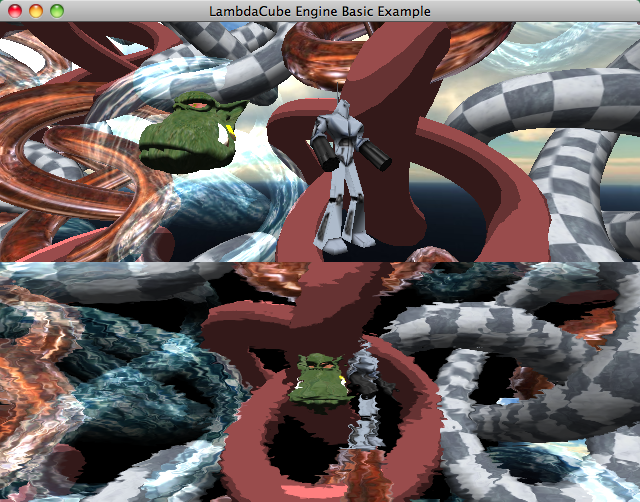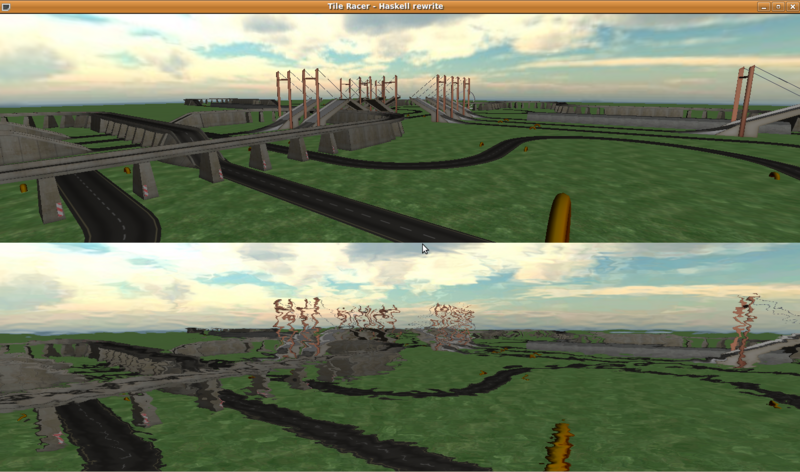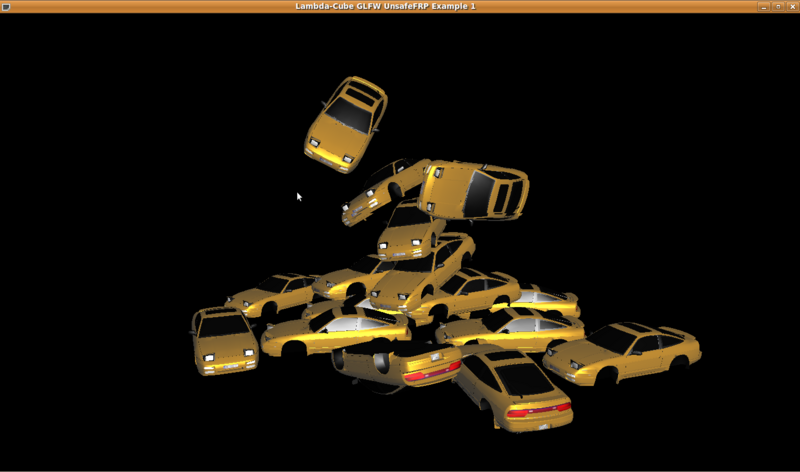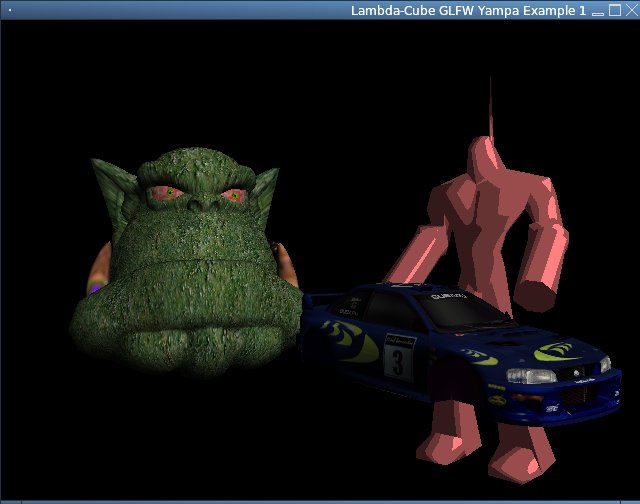Difference between revisions of "LambdaCubeEngine"
| Line 44: | Line 44: | ||
* Must have: |
* Must have: |
||
| ⚫ | |||
** (DONE) light setup |
** (DONE) light setup |
||
** (DONE) frustum culling |
** (DONE) frustum culling |
||
| ⚫ | |||
| ⚫ | |||
** full shader support |
** full shader support |
||
| ⚫ | |||
* Medium priority: |
* Medium priority: |
||
| ⚫ | |||
** overlay support + font rendering |
** overlay support + font rendering |
||
| ⚫ | |||
** binary loader for the native Ogre format |
** binary loader for the native Ogre format |
||
** framework for supporting various shaders (glsl, Cg) |
** framework for supporting various shaders (glsl, Cg) |
||
** (DONE) rewrite to [http://hackage.haskell.org/package/OpenGLRaw OpenGLRaw] |
** (DONE) rewrite to [http://hackage.haskell.org/package/OpenGLRaw OpenGLRaw] |
||
| ⚫ | |||
* Low priority: |
* Low priority: |
||
** particle system |
** particle system |
||
| ⚫ | |||
| ⚫ | |||
** volumetric clouds |
** volumetric clouds |
||
** imposters |
** imposters |
||
** Collada support |
** Collada support |
||
| ⚫ | |||
** mesh modelling interface |
** mesh modelling interface |
||
* Long term: |
* Long term: |
||
Revision as of 17:23, 2 December 2010
Overview
LambdaCube is a 3D rendering engine entirely written in Haskell.
The main goal of this project is to provide a modern and feature rich graphical backend for various Haskell projects, and in the long run it is intended to be a practical solution even for serious purposes. The engine uses Ogre3D's mesh and material file format, therefore it should be easy to find or create new content for it. The code sits between the low-level C API (raw OpenGL, DirectX or anything equivalent; the engine core is graphics backend agnostic) and the application, and gives the user a high-level API to work with.
An application building on LambdaCube is composed of the following layers:
| application | ||||
| optional components | ||||
| generic core | ||||
| render system | ||||
| native OpenGL | or | DirectX | or | ... |
- optional components: e.g. loaders for various formats, physics engine
- generic core: resource handling, script loading, rendering
- render system: a thin abstraction layer to unify low-level APIs
News
- 2009-11-18 - The first release on Hackage: engine and examples, plus a bullet example that will eventually grow into a library
- 2009-09-22 - The summer report was presented at the JSSP meeting
- 2009-08-10 - Major public commit that went with the mid-summer report
- 2009-05-12 - Project announced to be among the JSSP winners
- 2009-03-31 - Application for Jane Street Summer Project sent in
- 2009-01-?? - Development started
Download
LambdaCube repository at Google Code
Todo
- Must have:
- (DONE) light setup
- (DONE) frustum culling
- skeletal animation
- shadow mapping
- full shader support
- LOD support
- Medium priority:
- Low priority:
- particle system
- volumetric clouds
- imposters
- Collada support
- mesh modelling interface
- Long term:
- Quake3 map loader (BSP support)
Screenshots
2009-11 - Hackage release
2009-09 - JSSP meeting
Tile Racer track loader:
Bullet physics integration:
2009-03 - Pre-summer mock-up
Licence
The code is released under BSD3.
Features
- Mesh file format
- Geometry is supported
- Material Script
Dependencies
- Core library:
- Optional components:
- Examples:
The engine and the examples not using physics build out of the box on a fresh Haskell Platform install under Windows.



